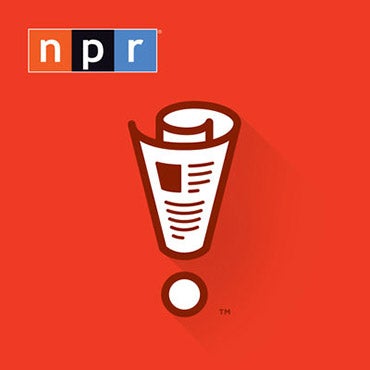Earthquake victims find pocket of hope
In the immediate aftermath of an earthquake that killed more than 200,000 people in Haiti last year, WHYY’s Susan Phillips travelled with a medical team from Camden’s Cooper University Hospital, reporting on their work. They set bones, helped perform amputations, and cared for wounded Haitians who fled to the neighboring Dominican Republic. In the final piece of her five-part series, Susan travels back to the border area to find out what became of some of those patients.
A year ago, the small general hospital in the Dominican town of Jimani overflowed with wounded Haitians. Today, the halls are quiet. The beds are empty. And no one is lying on the floor.
This time last year, after Haitians received life-saving amputations, they were transported back across the border to an American-run orphanage in the Haitian town of Fond Parisien.
At first the doctors from Camden’s Cooper University Hospital worried about their patients’ fate, but after traveling seven miles across the border to check out the facility, Cooper emergency medical doctor Josh Torres-Cruz was pleasantly surprised.
“Yesterday was the biggest emotional low for us as a group was just the fact that we were caring for 50 patients and doing daily wound changes and then one day they just picked up and disappeared,” Torres-Cruz said one year ago. “It was like they went to nowhere. Obviously we found out today that they went to a good place, so that’s an emotional high.”
Love a Child, an orphanage run by American missionaries became the post-operative ward for thousands of wounded Haitians. A refugee camp, built and managed by the Non-Governmental Organization American Refugee Committee, housed more than 2,000 of those victims for the past year.
Those earthquake victims are now moving into newly built houses, paid for by donations to the aid group — Love a Child. They have named the new community Hope Village.
The brightly painted pastel houses are constructed of wood and specially designed for amputees. Each has three rooms. Residents share common toilets. Love a Child pays for the entire infrastructure needed to house 2,000 residents, as well as a health clinic. And, unlike most kids in Haiti, all the children get to go to school.
Twenty-three year old Jeannine Petiot lives in one of these houses. Petiot has one leg, and holds her infant niece on her lap, as she talks about how she survived the earthquake. Petiot says she was caring for a set of infant twins in Port-au-Prince when she felt the earth move, and saw a neighbor’s house rise up and move toward her. Only one of those twins survived.
After she was pulled from the rubble, an American took her to the hospital in the Dominican town of Jimani, where one of her legs was amputated.
Today, she says every time she hears a truck roll by, she becomes short of breath, and her heart beats rapidly. When she thinks she feels an earthquake, she reminds herself that she doesn’t live in a concrete house.
Petiot says she has everything she needs here, in Hope Village, and would never return to Port-au-Prince. But she says she’s never spoken to any doctors about the lingering emotional scars.
The residents of the refugee camp are building the houses with the help of American volunteers. Jean Pierre is the foreman in charge. He says, he’s never moving back to Port-au-Prince.
“We were about 12 people in my house,” said Pierre. “I was up on the top floor. There were two floors. And there were twelve…only three people survive: me and my wife and my daughter. All those people went down into the dirt.”
Pierre says a piece of iron had pierced his head and his shin bone was sticking out of his leg. For four days, he couldn’t find any help in Port-au-Prince. Then a Dominican man picked him up and took him across the border to Jimani, where he was treated by American doctors.
“American people I love them,” he said, “because without them, wow. Our government they don’t do nothing for us.”
Pierre lived at the refugee camp for about ten months, until the new house was ready. He feels lucky to have work and a place to live.
“I have to say thank you to Love a Child…wow, look at me now,” Pierre said. “They took me with a t-shirt on. That’s it. I lost everything in my house, everything. But now I’m looking good. I got house, I got clothes…now i’m the foreman. I’m the boss.”
Recovery closer to where the earthquake hit in Port-au-Prince is moving much more slowly. A million people still live in tents, with little hope of moving into permanant housing. Meanwhile, the country is struggling to hold elections not marred by fraud. Jean Pierre wonders if the government will ever be able to take over work now done by aid groups like Love a Child. In his words, “no foreign people, no Haiti.”
WHYY is your source for fact-based, in-depth journalism and information. As a nonprofit organization, we rely on financial support from readers like you. Please give today.

